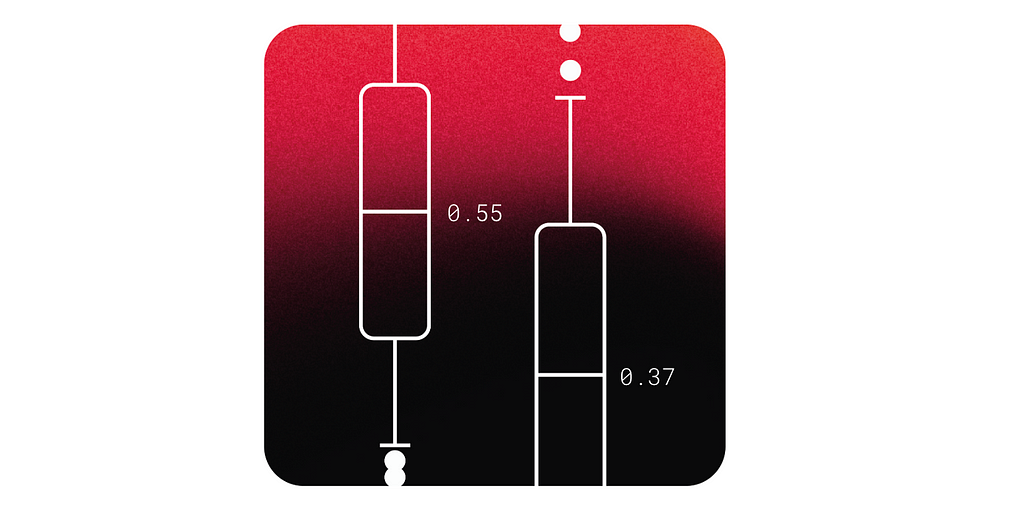Best User Flow Diagram Tools for Seamless UX Design in 2025
User flow diagram tools are important for seamless UX design, as a user flow is required to define the steps that users will take while interacting with the product. UX design related to user experience, hence, user flow diagram tools will definitely help in enhancing the complete user experience. This article depicts top user flow diagram tools and also explains user flow, what user flow diagram tools are and why these user flow diagram tools are essential. Top User Flow Diagram Tools in 2025 Visualize the way you want your users to use your product through these best user flow diagram tools. Wireflow Wireflow is available online and is an open-source tool. You can create prototypes of the user flow. Even a newbie without Photoshop skills can create user flow diagrams with Wireflow. You get an option to use more than 100 customized in-built graphics. Wireflow allows real-time collaboration. That means you can work on a design alongside your friends, colleagues, or group members. Thus, extra efforts offer extra fruits. In Wireflow, you can design your project rooms. In these virtual rooms, you can add anyone you want, and you can even set the privacy of the project room as per your needs. In short, it is a user-friendly tool that provides you with plenty of simple yet essential features. The developers of this tool aim to simplify the process of designing user flow. Miro From brainstorming with your cross-functional squad to gathering feedback for iteration and reiteration, Miro allows to create product experiences by adding magic to them. Miro is #1 collaborative whiteboard platform for small as well as large teams, trusted by over 45 million users worldwide. Create a visual, single source of truth by centralizing product specs, wireframes, UX flows, and more on a whiteboard you never have to erase. Apart from text-only roadmaps it offers color-coding, grouping, and eye-catching templates. You get direct feedback from stakeholders via comments. Explore 300+ templates and powerful integrations with your favorite tools. Trusted by 45+ million users worldwide, Miro has a free plan that lasts forever. Monthly subscriptions start from $8 per month. Timblee Timblee helps you to develop user flow diagrams in the initial stages of product development. The best part of Timblee is that it works on the web as well as mobiles properly. It eliminates the need for complex tools in the early stages of user experience planning. It is free for the first 14 days so that you can decide if it's worth the money or not. It offers several features that help you to design sitemaps along with flow diagrams. It is excellent for starters because it offers drag and drop feature, which is relatively easy to handle. One of its essential features is that it allows you to share your designs with others. Additionally, users without an account on Timblee can view your work and provide feedback. Microsoft Visio The name indicates that it is part of the Microsoft family. Microsoft Visio is a broad-spectrum vector graphics application. So, in addition to generating flow diagrams, Visio allows you to execute a variety of other tasks. One thing should be evident by now: this is exclusively available to Microsoft users. It includes a large selection of templates from which to choose. Its professional edition has a more extensive selection of templates and layouts. You can also link your data sources and diagrams. One intriguing characteristic of Microsoft Visio is that its UI is comparable to Microsoft Office. Most of us have used Microsoft Office since we were children, so obtaining Visio should be simple. Visio is not free and offers a 30 days free trial. Draw.io Draw.io is a web-based application for creating flow diagrams. All of its general functions are free, but if you want to use specific high-end integrations, you must pay for them. It allows you to save diagrams to Google Drive, Dropbox, or your computer. It is one of the most popular browser-based diagramming apps. Draw.io allows you to import a variety of file types, including Lucidchart and Gliffy. It provides numerous templates. It contains a large form library from which you can select your preferred one. You do not need to register to use Draw.io. You can also download the desktop software and operate offline without restrictions. It is compatible with almost all browsers and works well on mobile devices as well. SmartDraw SmartDraw is a flow diagram application that is available online and may also be downloaded for Windows. SmartDraw's makers believe it is even easier than Visio. So they argue that it is a less expensive but functional alternative to Visio. You may import and export diagrams in the same format as Visio. It can also run on Mac. It provides more than 70 different templates for various diagram formats. SmartDraw is not fully free, but in comparison to its

User flow diagram tools are important for seamless UX design, as a user flow is required to define the steps that users will take while interacting with the product.
UX design related to user experience, hence, user flow diagram tools will definitely help in enhancing the complete user experience.
This article depicts top user flow diagram tools and also explains user flow, what user flow diagram tools are and why these user flow diagram tools are essential.
Top User Flow Diagram Tools in 2025
Visualize the way you want your users to use your product through these best user flow diagram tools.
Wireflow
Wireflow is available online and is an open-source tool. You can create prototypes of the user flow. Even a newbie without Photoshop skills can create user flow diagrams with Wireflow. You get an option to use more than 100 customized in-built graphics.
Wireflow allows real-time collaboration. That means you can work on a design alongside your friends, colleagues, or group members. Thus, extra efforts offer extra fruits.
In Wireflow, you can design your project rooms. In these virtual rooms, you can add anyone you want, and you can even set the privacy of the project room as per your needs.
In short, it is a user-friendly tool that provides you with plenty of simple yet essential features. The developers of this tool aim to simplify the process of designing user flow.
Miro
From brainstorming with your cross-functional squad to gathering feedback for iteration and reiteration, Miro allows to create product experiences by adding magic to them.
Miro is #1 collaborative whiteboard platform for small as well as large teams, trusted by over 45 million users worldwide. Create a visual, single source of truth by centralizing product specs, wireframes, UX flows, and more on a whiteboard you never have to erase. Apart from text-only roadmaps it offers color-coding, grouping, and eye-catching templates.
You get direct feedback from stakeholders via comments. Explore 300+ templates and powerful integrations with your favorite tools. Trusted by 45+ million users worldwide, Miro has a free plan that lasts forever. Monthly subscriptions start from $8 per month.
Timblee
Timblee helps you to develop user flow diagrams in the initial stages of product development. The best part of Timblee is that it works on the web as well as mobiles properly. It eliminates the need for complex tools in the early stages of user experience planning.
It is free for the first 14 days so that you can decide if it's worth the money or not.
It offers several features that help you to design sitemaps along with flow diagrams. It is excellent for starters because it offers drag and drop feature, which is relatively easy to handle. One of its essential features is that it allows you to share your designs with others. Additionally, users without an account on Timblee can view your work and provide feedback.
Microsoft Visio
The name indicates that it is part of the Microsoft family. Microsoft Visio is a broad-spectrum vector graphics application. So, in addition to generating flow diagrams, Visio allows you to execute a variety of other tasks. One thing should be evident by now: this is exclusively available to Microsoft users.
It includes a large selection of templates from which to choose. Its professional edition has a more extensive selection of templates and layouts. You can also link your data sources and diagrams. One intriguing characteristic of Microsoft Visio is that its UI is comparable to Microsoft Office. Most of us have used Microsoft Office since we were children, so obtaining Visio should be simple.
Visio is not free and offers a 30 days free trial.
Draw.io
Draw.io is a web-based application for creating flow diagrams. All of its general functions are free, but if you want to use specific high-end integrations, you must pay for them.
It allows you to save diagrams to Google Drive, Dropbox, or your computer. It is one of the most popular browser-based diagramming apps. Draw.io allows you to import a variety of file types, including Lucidchart and Gliffy.
It provides numerous templates. It contains a large form library from which you can select your preferred one. You do not need to register to use Draw.io. You can also download the desktop software and operate offline without restrictions. It is compatible with almost all browsers and works well on mobile devices as well.
SmartDraw
SmartDraw is a flow diagram application that is available online and may also be downloaded for Windows. SmartDraw's makers believe it is even easier than Visio. So they argue that it is a less expensive but functional alternative to Visio. You may import and export diagrams in the same format as Visio. It can also run on Mac. It provides more than 70 different templates for various diagram formats.
SmartDraw is not fully free, but in comparison to its competitors, it is reasonably priced.
Aside from being user-friendly, one of its most notable features is automated formatting. It prepares your diagram automatically to remove any errors and faults. You can easily integrate your Google apps and MS Office tools to it.
OmniGraffle
OmniGraffle is accessible on both Mac and iOS. It is a simple to use program. It is somewhat expensive, as are many other Mac programs. It comes in both professional and standard versions. It offers a vast number of basic tools such as pen, line, shape, and text tools.
Whereas the list of features that it provides is quite long. A professional will be more than happy to use such high-end features.
The main feature that makes it stand out is that it offers design layers. With the help of design layers, the user can visualize their designs.
Cacoo
Cacoo is a popular user workflow design tool. Cacoo supports the creation of flow diagrams as well as other sorts of diagrams. Cacoo's developers believe in collaboration. Cacoo allows you and your peers to collaborate and edit a diagram at the same time. It also allows you to comment on your teammate's work, all on your own canvas.
Cacoo has two working modes available to you. Either, you can start from zero with your ideas, or you can choose from 100s of pre-available templates.
It offers a 14-day free trial, and after the trial finishes, you need to pay for its services. The canvas in Cacoo is very easy to organize. You can manage your team along with it as well.
Justinmind
Justinmind is a prototyping tool. It is compatible with both the web and mobile phones. It includes many mobile gestures and web interactions to make designing simple and enjoyable for you. It also includes a variety of transitions and animations to enhance the interactivity of your design.
You can generate dynamic data lists. It also enables data-driven user testing. This application allows you to rapidly preview your creations. This previewing might help you eliminate features that are unnecessary. This will save you time and effort.
You can link and export your design to HTML in the same link. Finally, you can invite your clients and team members to view your designs so that any misunderstanding on the later stages can be avoided.
Mockplus
Mockplus is a free prototyping tool. It is an easy-to-use tool with a simple interface. You can use Mockplus on iOS, Android, and the web. It has over 200 ready-made components and templates from which to pick. It offers around 3000 vector icons. All of this enables you to work even faster.
However, just because it has enormous built-in icons does not mean you can't change them. You can create a personalized library with your preferred icons and interactions. It also has the traditional drag-and-drop approach for basic creation. It enables immediate previewing and lets you link your designs to HTML.
Flowmapp
Flowmapp is an online application for creating flowcharts and visual sitemaps. It features an interactive working board. You may collaborate in real time by sharing your board with your peers and clients.
Furthermore, once you've completed your portion of the job, you can delegate it to others. Flowmapp allows you to professionally lay out your designs. Then, utilizing Flowmapp's useful tools, you can make your plans a reality.
It supports helicopter views. This view allows you to take a top-down look of your projects, giving you a different perspective on your designs.
It provides a 14-day free trial to its users.
Lucidchart
Lucidchart tool offers you with a workspace. It integrates aspects from three different processes: diagramming, data visualization, and collaboration. It encourages networking, allowing you to collaborate on your ideas in real time. It allows you to plan, brainstorm, and design.
Lucidchart is only available on browsers that support HTML5. This feature implies that it does not need third-party upgrades.
It has a free edition that provides access to all of Lucidchart's basic features. The paid edition, on the other hand, includes all of the premium features.
Creately
Creately's drag-and-drop interface simplifies the process of visualizing user flows. One can start with its pre-built templates and then progress to use its context-aware shape swapping, auto-arranging connectors, and freehand sketching.
Creately enables real-time collaboration through native video conferencing, commenting, and whiteboarding. It gives individual cursors for all users on a shared canvas, together with a comprehensive version history.
Furthermore, there is no canvas limit, and you can extend forever to keep all project-related information in one location. Plus, Creately works well with industry-standard tools like Github, Slack, Google Workspace, and others.
You can also embed such user flows on any website, send an email, or link-invite people to collaborate. Creately also allows role-based access for secure and seamless teamwork.
You can get started with the limited-powered free plan and upgrade if required.
Venngage
Venngage is most recognized for its ability to create infographics, but you can also utilize the same feature set to create user flows.
Simply begin with social logins and utilize the existing templates. What helps is smart editing, which makes it simple to create diagrams with a variety of shapes and colors.
The drag-and-drop editor makes creating userflows even easier, and a public link allows you to simply share them with anyone. Alternatively, it can be downloaded in high quality.
Venngage is also collaborative, allowing users to create and remark in real time.
Venngage offers a free plan for testing out the basic features. Its paid subscriptions include unlimited designs, high-quality exports, email and chat assistance, and more.
UserBit
UserBit is another one that uses a drag-and-drop interface to create user flows. It offers an intuitive editor that eliminates the need to move individual blocks and automatically changes the flow.
The collaboration includes access-control tools that ensure role-based teamwork. It allows you to export an image with only one click.
UserBit offers a free subscription that allows you to build one project with unlimited team members. Paid options include additional projects, cloud storage, and other features.
Now that we've reviewed the best user flow diagram tools, let's talk about what user flow is, what these tools are, and why they're important.
What is a User Flow?
A user flow is defined by the stages that a user takes when interacting with your product, which can be anything from your website or application to the service you offer or the product you sell.
Consider visiting a supermarket to buy eggs; what would you do? You will enter through the front door and then proceed to the dairy department. After receiving the eggs, you will proceed to the billing counter. You will pay for the product and then leave through the exit door. That was your process for obtaining your preferred things.
Similarly, when a user follows a given path to attain a certain set of goals or to perform a task, then that path becomes the use flow.
What are User Flow Tools?
Until now, we've just discussed theoretical user flows. To properly comprehend the user's engagement with your product, you must have a visual depiction of all conceivable user flows. This is where user flow tools come in.
User flow tools are tools that show you a visual representation of the user flow. These tools illustrate user flow in an appropriate schematic style.
Why Using User Flow Tool is Essential?
You might be wondering why employing user flow tools is so vital.
Ask yourself why you produce your products (website or application).
To deliver a terrific experience for your users, correct?
To accomplish this, you must first consider all of the different interactions that the consumer may have with your product. User flow tools will give you with a schematic representation of all possible interactions. After you understand the user flow, you may focus on improving the user experience.
Conclusion
Imagine you're going to compose an essay. You have the plot for your essay mapped out in your head, but you don't have a pen and paper to put it down. You cannot edit or correct an essay if you have not written it. Can you show it to the teacher without proofreading it?
The same is true when you have a user flow in mind but lack the tools to envision and create it. You cannot improve user experience (UX) without first visualizing user flow.
So, define the prerequisites for designing your user flow. Keep in mind that each tool has something unique to offer. Then select a user flow tool as per your needs.
What's Your Reaction?































































